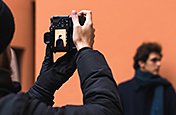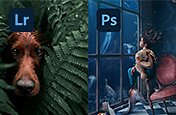A guide to basic photography terms.
Like every industry, photography has its own specialized terminology. With this guide to common photography vocabulary for gear, techniques, and processes, you’ll be able to dive more deeply into the world of photography.
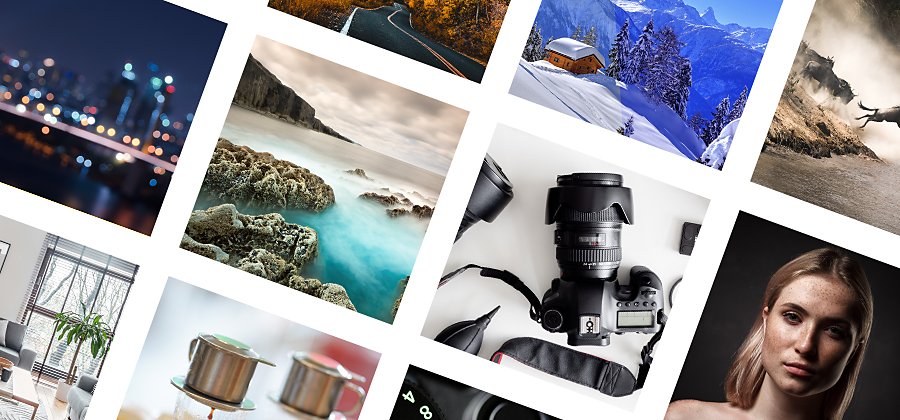
Know your photography terms.
If you want to navigate the world of professional photography, you need more than just a good eye. Photography is a field with technical and artistic terms that describe aspects of image quality, parts of the camera, shooting and editing techniques, and much more. You need to know the right words for gear, techniques, and camera settings to best pursue the art and craft of photography.
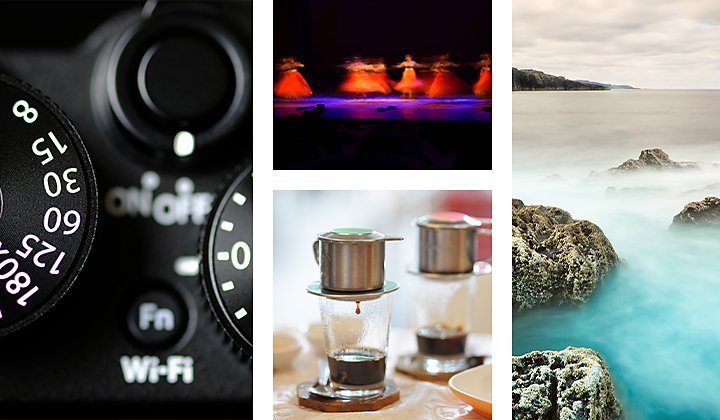
Basic photography terms.
Aperture: The part of the camera that opens to let light in. The f-stop or f-number is the measurement of how open or closed the aperture is.
Depth of field: The difference between the closest and farthest in-focus objects in a photo. A shallow depth of field means that relatively close background objects become blurry. A deep depth of field means that faraway background objects are still in focus.
Dynamic range: The difference between the darkest and lightest tones in an image — the range of dark and light that a camera is capable of. Darkest and lightest hues are very rarely pure black or pure white. Cameras usually have a lower dynamic range than the human eye.
Exposure triangle: The combination of aperture, ISO, and shutter speed, which determines the time and intensity of light being let into the camera. Different exposures in film and digital images alike are achieved by adjusting these exposure settings.
Focal length: The distance (usually measured in millimeters) between the optical center of a camera lens and the camera sensor (sometimes called the image sensor).
F-stop: The size of the aperture opening, also known as the f-number. A small f-number means the aperture is open more. A larger f-number means it’s open less. For example, f/1 lets in much more light than f/6.
ISO: How sensitive your camera is to light. A higher ISO will be more sensitive and photos will generally be brighter. A lower ISO less so. This term used to apply to film, but in the digital era it is now a camera setting. ISO gets its name from the International Organization for Standardization, a group based in Switzerland that began standards for industrial and commercial products, including cameras, following World War II.
Shutter speed: How long the camera’s shutter is open and the sensors inside are exposed to light. Very high shutter speeds are used for things like capturing a moving subject without blur. Low shutter speeds, for example, are often used for nighttime photography or by landscape photographers, which benefit from more light entering the camera during the longer shutter duration.
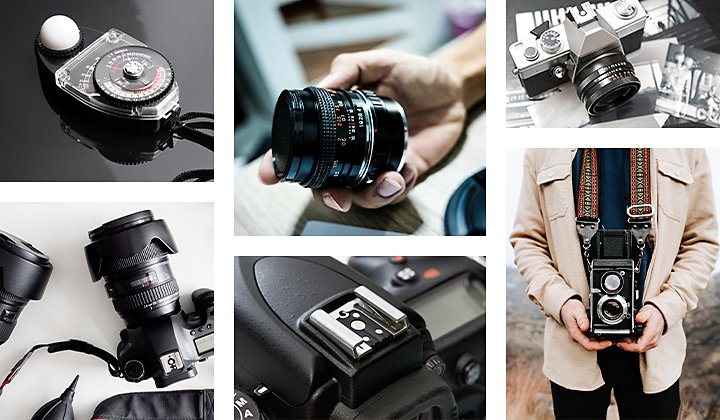
Types of photography equipment and gear.
Auto-focus and manual focus: Auto-focus is when the camera trains itself on a subject. Modern camera software can usually recognize common subjects like human faces and will make sure they are not blurred. Most of the time, photographers can control or manipulate autofocus themselves. Manual focus is when a photographer has to physically move the lens by hand to ensure subjects are not blurred.
Camera body: The main part of the digital camera that includes the sensors, electronics, software, etc. The thing you’re holding when you take pictures. Usually, the body does not include the lenses.
DSLR: DSLR stands for Digital Single Lens Reflex. A DSLR camera combines the optics of a traditional single lens reflex camera with a digital sensor.
Hot shoe: The mounting point on a camera for a flash or other electronic accessory. Usually on top of the camera body.
Light meter: A device used to precisely measure a light source or the amount of light in a space.
Mirrorless camera: Technically most DSLR, point-and-shoot, and smartphone cameras are mirrorless, in that they literally don’t have internal mirrors. However, mirrorless camera is a specific term for a camera where the sensor is directly exposed to light and the photographer has a preview of the potential image at all times to view on an electronic viewfinder.
Point-and-shoot: Small cameras designed for ease of use. They usually focus and handle exposure automatically, have flashes built in, and do not require a great amount of skill to use effectively. These cameras are less popular now that smartphone cameras are so common.
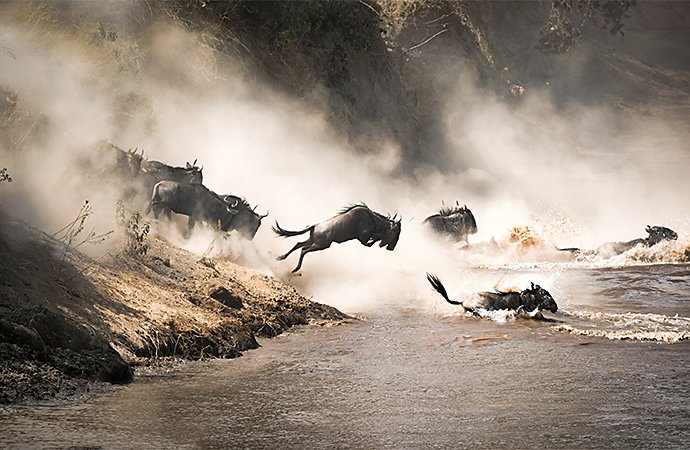
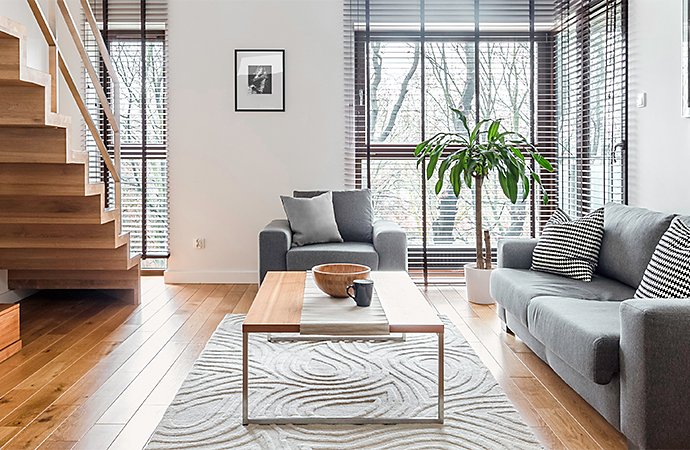
Prime lenses: Lenses with a fixed focal length. Distinct from zoom lenses, which have variable focal lengths. Sometimes called unifocal lenses.
Single lens reflex camera: A term usually applied to pre-digital cameras. A camera with one lens that moves in relation to a mirror and sensor. Older cameras sometimes had two lenses, which did not allow the photographer to get a good look at what they were photographing through the viewfinder. With SLR cameras, what the photographer sees through the viewfinder better approximates how the final photograph will actually look.
Telephoto lens: Lenses that specialize in long-range photography and make the subject appear closer to the camera. Telephoto lenses tend to be large, and their focal length is shorter than their physical length. Because of this, objects like far-off wildlife appear much closer.
Viewfinder: What the photographer looks through to take a picture. With a single-lens reflex camera the photographer can actually look through the camera’s optical equipment to see their subjects. Most cameras today have electronic viewfinders, which is a digital display of what the camera lens will capture when the shutter is closed.
Wide-angle lens: A lens whose focal length is shorter than its physical length. Allows for a wider field of view, good for landscapes, architecture photography, and large group photos.
Zoom lens: A lens with an adjustable focal length, allowing the photographer to quickly change the angle of view without swapping out lenses. Popular with photojournalists and event photographers, who have to capture events as they happen, due to its flexibility and versatility in the moment.
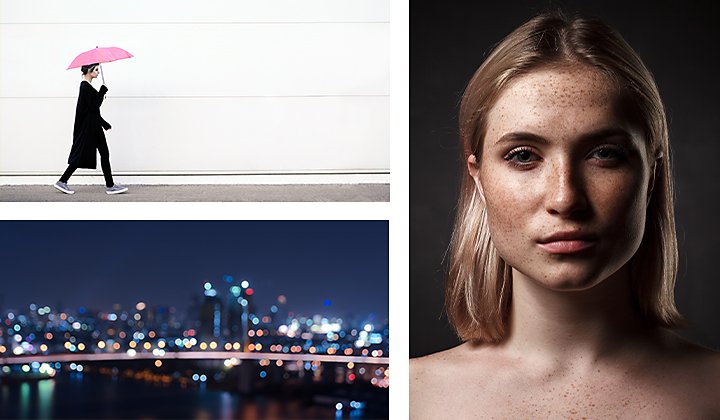
Photography techniques and other terms.
Aperture priority: A setting on cameras usually abbreviated as A or Av. Allows the photographer to set a specific aperture or f-number, and the camera will automatically choose a shutter speed and ISO to match. Useful for keeping a specific depth of field while shooting.
Aspect ratio: An image’s ratio of width and height. Common aspect ratios for consumer cameras are 3:2 and 4:3. Smartphones usually take pictures with an aspect ratio of approximately 4:3.
Bokeh: The Japanese word for haze or blur. Refers to intentional background blur, popular in portraits.
Chromatic aberration: Also known as color fringing or purple fringing. A ghostly effect when a lens is not able to bring all wavelengths of a color to the correct point. Usually indicates older, low-quality photography. Similar to a glitch effect, it can be added intentionally to give photos a retro quality.
Composition: How different elements of an image are arranged within the frame. Photographers can control composition by moving the camera, adjusting the focus, or cropping images in post-production. The rule of thirds is an example of a photo composition technique.
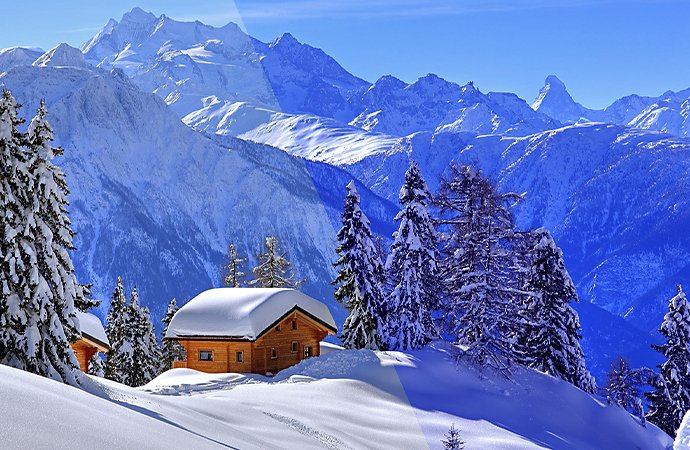
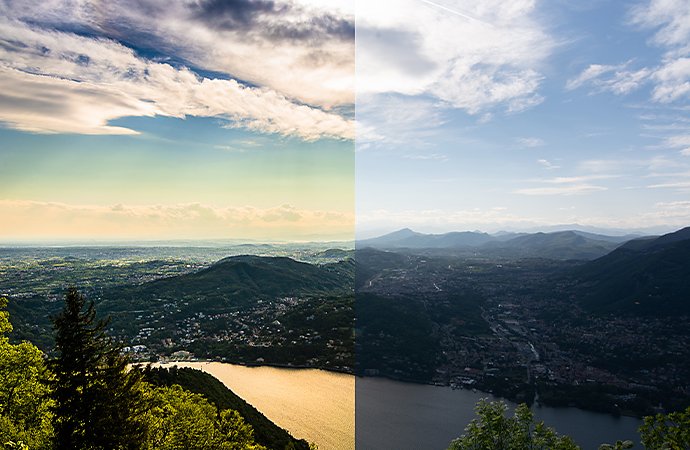
Crop factor: The ratio of the camera sensor size to what the lens can see. Modern DSLR cameras often have multiple sensors of varying sizes to control for distortions that come from crop factor.
Image stabilization: A variety of methods to reduce the blur that comes from camera motion. Image stabilization can come from equipment engineered into a camera, or it can be part of post-production.
Overexposure and underexposure: Letting in either too much light or too little on the camera sensor. Overexposed photos look blown out, with subjects generally looking overly pale. Underexposed photos tend to look dark and dim.
Post-production or post-processing: The process of cropping, editing, altering, and improving photo files in programs like Adobe Photoshop and Photoshop Lightroom.
Raw files: Unprocessed data. Raw image files have not been compressed or altered in any way. This means they are good for archival purposes, as they contain all the data associated with an image. However, raw files can be too large for certain uses, like online use.
Shutter priority: Sometimes known as time value, this setting on the camera is usually abbreviated as S or Tv. It allows the photographer to set a specific shutter speed and the camera will automatically choose an aperture and ISO to match.
TIFF: Stands for tagged image file format. A popular format for storing high-resolution raster graphics — graphics made of a set number of pixels. JPG and PNG are other image file types that TIFFs can be converted into.
Vignetting: Reducing an image’s brightness along the borders. Often, this effect draws the eye to a brighter central part of the image and can make the image look like it’s viewed through a hole or telescope.
White balance: The practice in digital photography of making the colors look more natural. White in particular can look blue or yellow depending on the color temperature of light. You can adjust the white balance to ensure that white looks white, and other colors look accurate as well.
Whether you use a Nikon, Canon, or simply a smartphone camera, knowledge of these terms will help you better understand photography, so you can advance your skills. Next, you can explore different types of photography, from close-up fashion portraits to nighttime time-lapses, to see how they factor into each genre of photography.
Do more with Adobe Photoshop Lightroom.
Edit photos easily with Lightroom presets, Super Resolution, easily share photos from any device, and access your projects anywhere with cloud photo storage management.
You might also be interested in…
Celebrate the full spectrum with color photography.
Enhance your color photography with an understanding of its history and color editing techniques.
Introduction to black and white photography.
Learn to use black and white photography to hone photography skills and capture perfect photos.
Tips on how to take better photos.
Explore tips and insights to make better photos, improve your skills, and hone your creative vision.
Lightroom vs. Photoshop: When to use each image editing program.
Learn the differences between these industry-leading photo editors and discover your ideal editing workflow.


